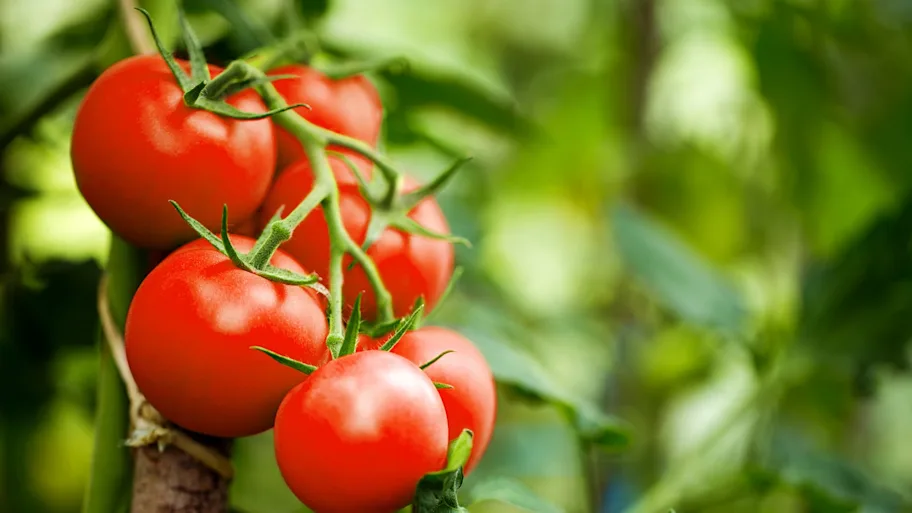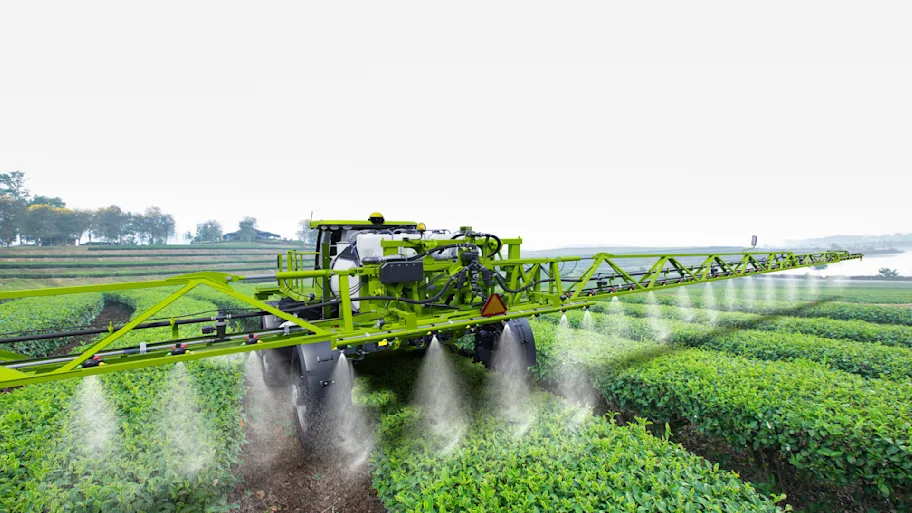
- Science news
- Featured news
- How ‘vaccinating’ plants could reduce pesticide use and secure global food supplies
How ‘vaccinating’ plants could reduce pesticide use and secure global food supplies

As the climate crisis alters familiar growing conditions, we urgently need to find ways of protecting the world against famines. Currently, our food system is heavily dependent on pesticides—but these pesticides grow less effective as pests develop resistance to them, have a substantial carbon footprint, and can damage biodiversity. Induced resistance, using plants’ immune systems to build up their strength and fight pests, could be critical to reducing our reliance on pesticides and developing sustainable agriculture.
In a growing and changing world, we need to find ways of putting food on everyone’s table. Pesticides have enabled mass cultivation on an incredible scale, but they can have harmful secondary effects on humans and wildlife, and pests are rapidly evolving to overcome them. To overcome this challenge and develop the sustainable and resilient agriculture of the future, scientists writing in Frontiers in Science explore the potential of induced resistance. Like a vaccination for plants, it deliberately triggers a plant’s immune system, so that when the plant encounters a similar stress in the future, it fights back better.
“While induced resistance has been studied for decades, its exploitation in crop protection has only recently begun to gain momentum,” said Prof Brigitte Mauch-Mani of the University of Neuchâtel, lead author of the article. “We argue in favor of a holistic approach to crop protection, which combines multiple strategies to deliver tailored solutions. Induced resistance sits in the heart of such an integrated approach.”
Food for thought
Right now, crops are mostly protected using pesticides and breeding for resistance genes, although there is a significant risk that pests will out-evolve plants intended to resist them. Induced resistance enhances abilities a plant already has to provide more sustainable and potentially broader-spectrum protection: defending against several pathogens and pests, not just one.
Induced resistance can take several different forms—for instance, plants releasing compounds which attract herbivores’ predators—but the best known and most widespread is defense priming. Defense priming takes place when part of a plant experiences a stress, and this weakly activates defense mechanisms which then activate fully when the plant undergoes another attack. Intriguingly, this priming seems to last so long that it can appear in the next generation of plants, potentially transmitted via epigenetic mechanisms.
However, induced resistance usually doesn’t offer complete protection, so must be combined with other measures. It also needs to be carefully calibrated to ensure that it doesn’t leave a plant open to other threats and doesn’t compromise growth by causing the plant to allocate too many resources to defense.
“Induced resistance is the result of a complex network of developmental and environmental pathways in the plant,” explained Mauch-Mani. “So safe and efficient exploitation of induced resistance is not as straightforward as the introgression of a single gene or spraying a single pesticide. We will need case-by-case evaluation of the optimal growth conditions, crop germplasm, and agricultural practices to capitalize on induced resistance’s multifaceted benefits.”
Seeds of the future
Once implemented, induced resistance could do more than just ward off pests. Some of the defense compounds that plants produce in response to induced resistance are linked to health benefits or higher-quality nutrition, meaning that we could benefit not just from avoiding pesticides but from eating healthier food. Induced resistance is also faster than traditional breeding, offering a quicker way to adapt to changing climatic conditions. It’s harder for evolving pests to evade, and it has the potential to offer broad-spectrum protection.
Combined with integrated pest management that uses pests’ natural enemies as crop protection, we could use induced resistance to cut pesticides to a bare minimum, making agriculture more sustainable. We could also secure much longer-lasting crop protection, once we develop a better understanding of the epigenetic mechanisms that transmit defense priming to a new generation.
To make induced resistance part of farmers’ and food scientists’ toolkits, the researchers said we urgently need more research that covers more real-world circumstances. We also need to understand how induced resistance performs under less controlled conditions and support the development of methods that can be scaled up to field trials and then into full-scale agriculture. The researchers also called for legislative support to establish quality standards, protecting producers and consumers.
“We strongly believe that fundamental research into induced resistance will be critical for the transition towards a truly sustainable food supply,” said Mauch-Mani. “However, there is an urgent need for better communication between discovery-focused research and other stakeholders who have the expertise to translate discovery into application.
“Governments need to create a research environment and funding climate that allows for more efficient knowledge exchange between scientists, policymakers, and industry. Like the biology underpinning it, successful exploitation of induced resistance relies on a multifaceted effort.”
This article is part of the Frontiers in Science multimedia article hub ‘Boosting plant immunity for sustainable agriculture’, which also features an editorial, two viewpoints, and a policy outlook from other eminent experts: Prof Nicole M. van Dam (Friedrich Schiller University Jena, Germany), Dr Axel Mithöfer (Max Planck Institute for Chemical Ecology, Germany) and Dr Alexandra C. U. Furch (Friedrich-Schiller-University, Germany), Dr Jyoti Shah (University of North Texas, USA), and Dr Osama El-Lissy (Food and Agriculture Organization of the United Nations, Italy)—as well as an explainer with infographics.
REPUBLISHING GUIDELINES: Open access and sharing research is part of Frontiers’ mission. Unless otherwise noted, you can republish articles posted in the Frontiers news site — as long as you include a link back to the original research. Selling the articles is not allowed.
About Frontiers in Science
Frontiers in Science is Frontiers’ multidisciplinary, open-access journal focused on transformational science to accelerate solutions for healthy lives on a healthy planet.
The journal publishes a select number of exceptional peer-reviewed lead articles invited from internationally renowned researchers, whose work addresses key global challenges in human and planetary health. Each lead article is enriched by a diverse hub of content that extends its reach and impact across society – from researchers and policymakers to lay audiences and kids.
For more information, visit www.frontiersin.org/science, follow @FrontScience on X, and follow Frontiers in Science on LinkedIn.






